Razer Blade
Razer enjoys an enviable position in the gaming laptop world. While its products are a bit more expensive than its competition, Razer completely eclipses its more affordable rivals in key areas – namely longevity and build quality.
The last few 14-inch Blade models have put out consistently improved battery life, and this version is no different. Add on a chassis design that few, if any, competitors have been able to rival, and Razer’s admittedly high asking price really starts to make sense.
The 2017 Razer Blade is a gaming laptop more deserving of that added price than ever before, now outfitted with a 7th-generation Kaby Lake Intel Core i7 processor, as well as a new 4K touch display option. Still, even with a gaming product this well made, we’re all the more eager for whatever innovative additions the company has planned for the next Blade laptop.
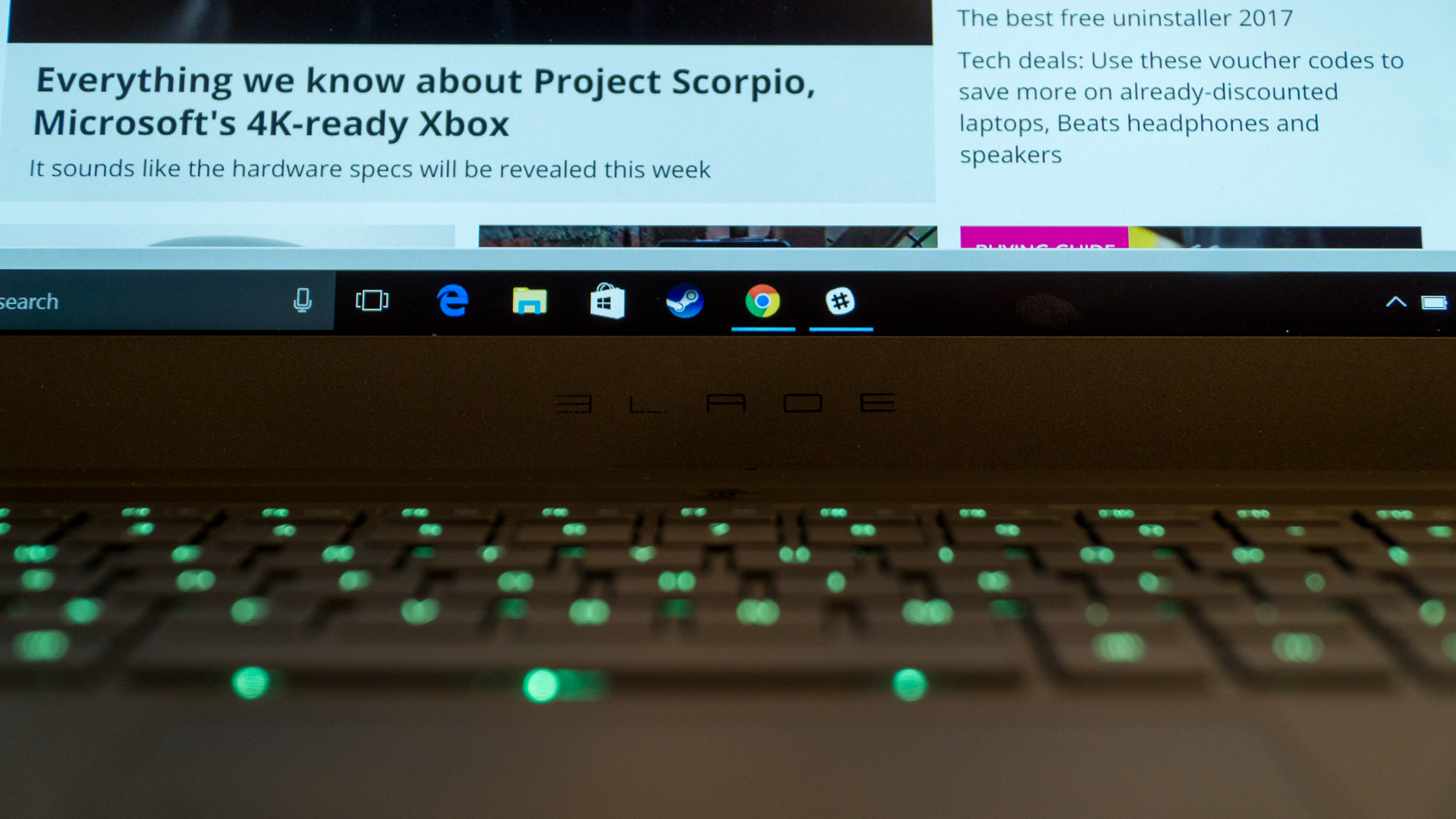
Price, availability and value
The Razer Blade continues to start at $1,699 (£1,659, AU$2,549) for a now non-touch Full HD (FHD) screen and 256GB SSD.
To have Razer’s latest primary gaming laptop in glorious Ultra HD (UHD), you’ll have to pay up at least $2,099 (£2,089, about AU$3,099). That buys you 512GB of solid-state storage, one of the latest, highest-end mobile CPUs from Intel, 16GB of memory and the same Nvidia GeForce GTX 1060 graphics chip as before behind a super-sharp, 14-inch touch display.
The only available upgrades to this 4K model is a 1TB solid-state drive (SSD) for a cool $2,499 (£2,489, AU$3,699) total. Once this beast is ready to ship, it shall decimate many a savings account.
Fortunately, the new 4K Blade is now available worldwide, along with some nice price drops.
By comparison, an Alienware 13 with an OLED touchscreen, though only QHD (2,560 x 1,440), and with double the RAM and SSD storage, meets the priciest Blade in all other regards for $2,449 (about £2,209, AU$3,917) as of this writing.
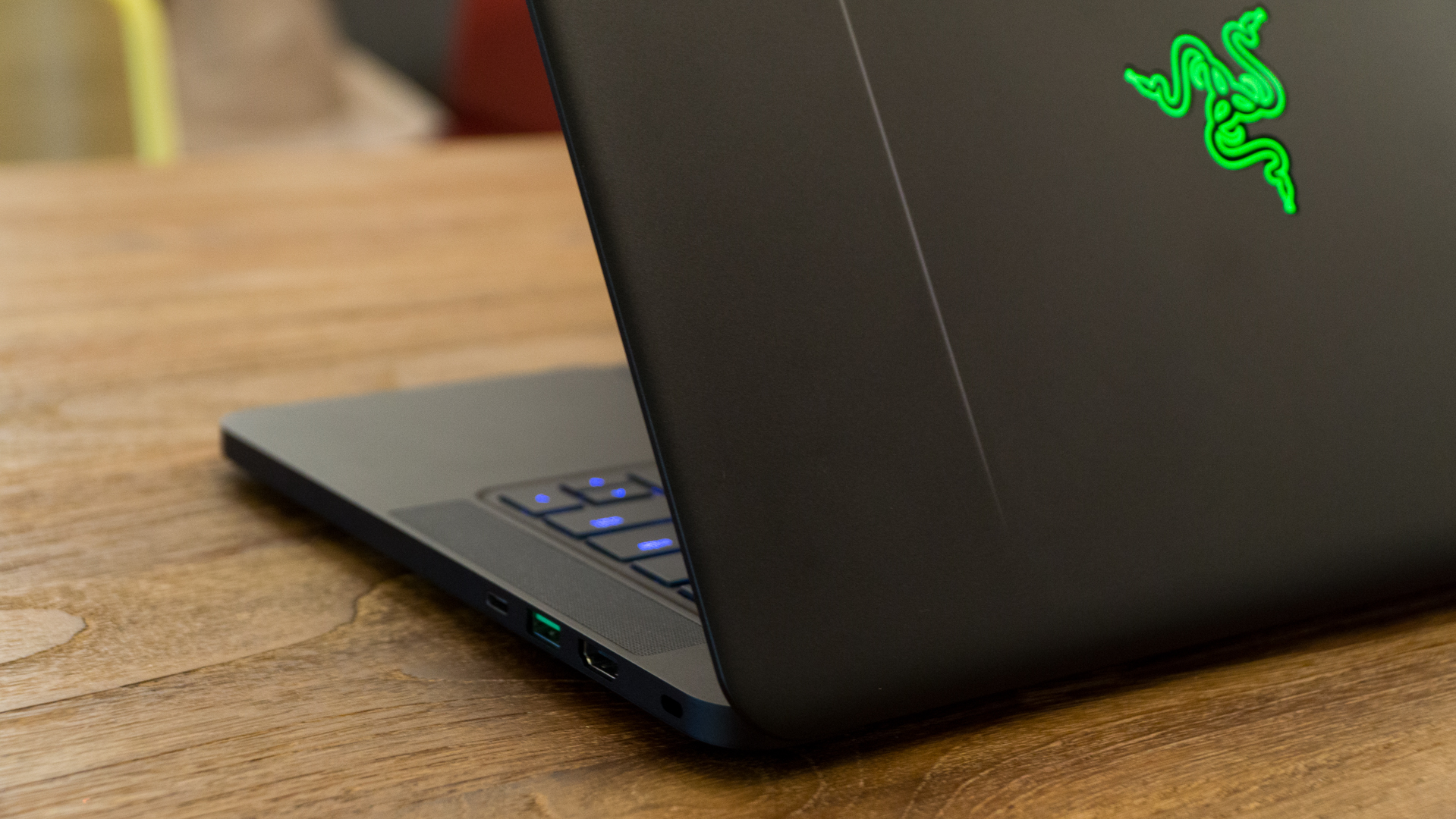
Design
Frankly, absolutely nothing about the Razer Blade design has changed now that it’s packing an optional Ultra HD display and newer processor. That’s not necessarily a bad thing, but it would be cool to see Razer go a little Apple with features unique to only its laptops – especially if they’re going to continue to consistently cost more than similarly-specced competitors.
We’re already seeing this in the Razer Blade Pro’s side-car oriented trackpad and original mechanical laptop key switches. Now, let’s get those fun niceties into the more mainstream models.
At any rate, the all-black, brushed aluminum frame feels as cool to the touch as ever; its matted sheen looks fetching under any light. The keyboard and trackpad remain unchanged, which has its ups and downs. The typing remains excellent – punchy and deep – as per usual, but we’d still like to see rid of those trackpad buttons. (Customer feedback in the other direction must be massive … somehow.)
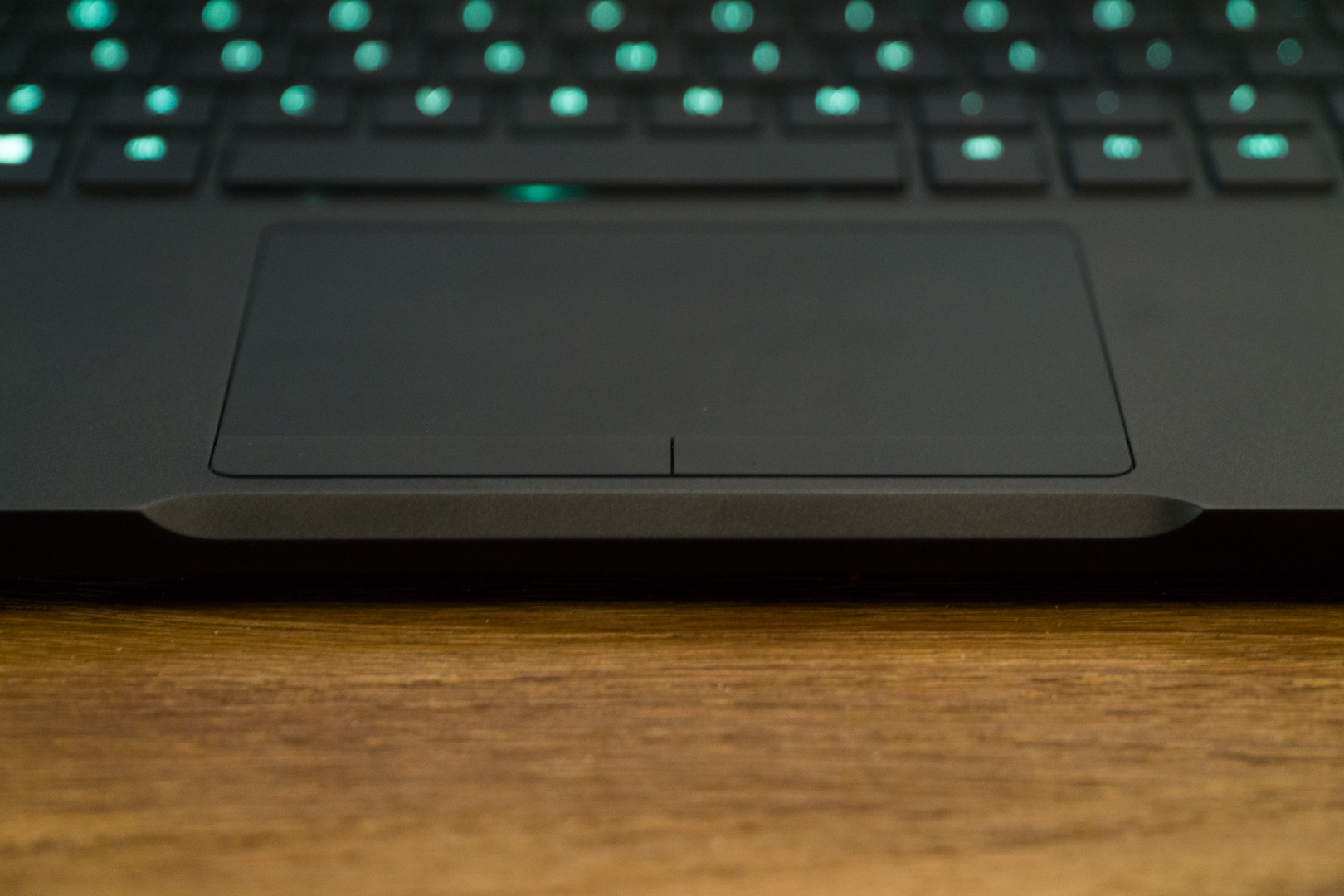
All in all, this is the same thin and light, lithe-feeling gaming notebook that, by all appearances, shouldn’t be able to play all the games it can. That said, the 4K touchscreen version does come in noticeably heavier at 4.3 pounds (1.95kg) compared to the 4.16-pound (1.88kg) FHD version, thanks in large part to heavier touch display components.
Speaking of which, we find the display quality to be unchanged, which is a good thing. It represents colors accurately and is plenty bright even at low levels. Plus, a matte finish on the FHD version helps tremendously with glare – you don't get that from the 4K touch model.
Regardless, you’re paying for the sweetest-looking gaming laptop around here, and in that department the Blade continues to deliver, easily outclassing the Alienware 13 and Gigabyte in terms of design and aesthetics.
First reviewed April 2017
When it comes to performance, we shouldn’t expect a ton more out of the Razer Blade in terms of graphical prowess than the previous model, as nothing about the dedicated graphics hardware has changed.
That said, we should at least see a boost to battery life, this model being a 1080p device like what we’ve tested previously, only with a supposedly more efficient processor.
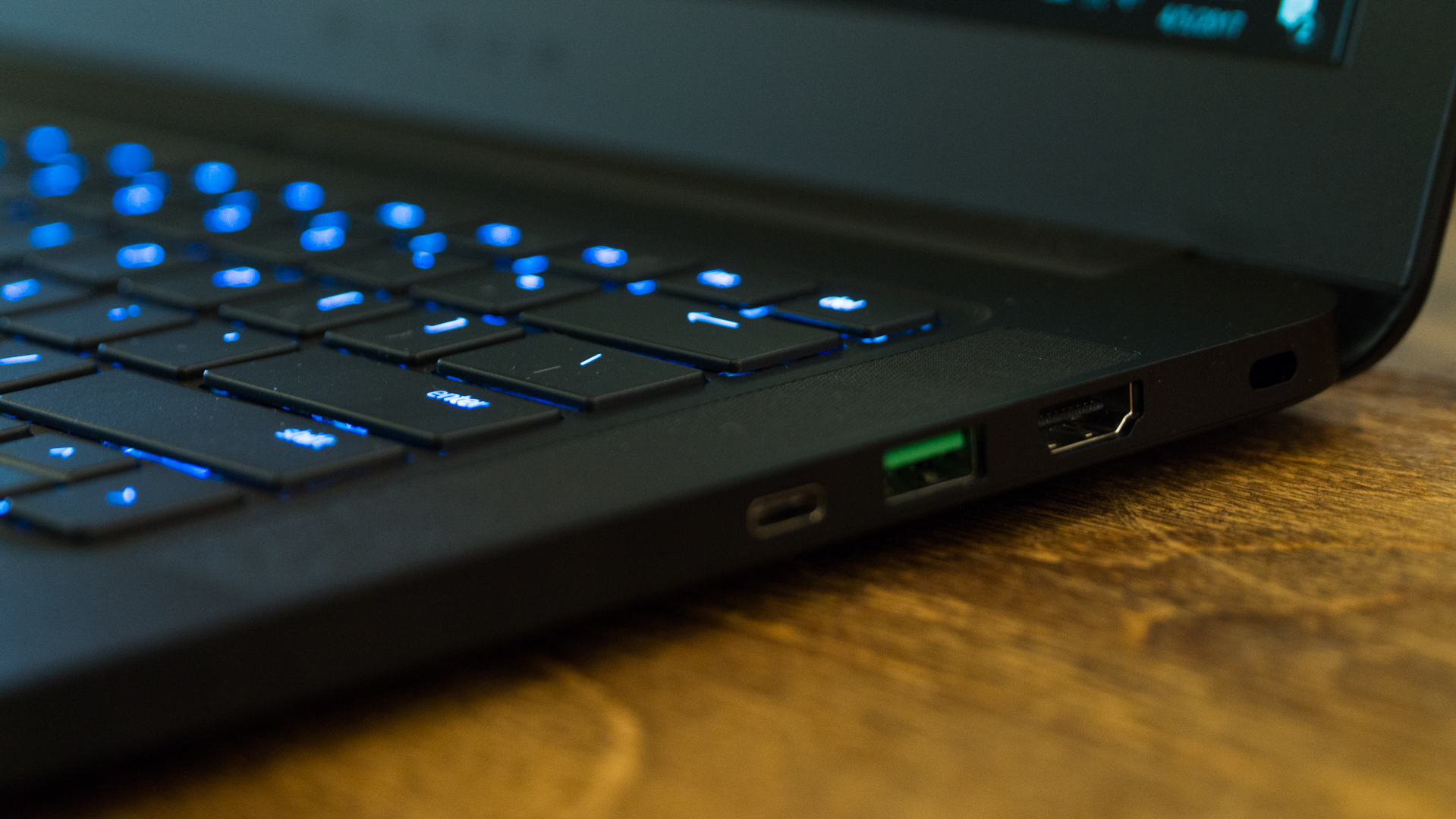
Performance
With the results in, the new Razer Blade offers exactly what we’d expect from it over the previous model: a modest uptick in performance to a machine that can already run most PC games quite well at high detail settings. You can see these modest boosts across the spectrum of the laptop’s benchmark results.
You have 800 more points in the Fire Strike test than last time, five more frames per second (fps) out of The Division at its Ultra detail preset and five more fps in Grand Theft Auto V, too, at the highest settings. If you’re looking to upgrade your Razer Blade from the previous model, you’re only going to see a mildly noticeable improvement in gaming performance.
And, no, the incredibly loud fan noise when the laptop is running a game has not gone away, so prepare to play with headphones. Granted, the speakers are admirably placed and powerful, but little can compete with those whirring fans.
While this won’t be a giant upgrade for Blade fanatics, folks that are coming from a Blade or other gaming laptop released two years ago should see a dramatic improvement. When compared against similarly-specced rivals, much of the same is true.
The differences between the new Blade’s numbers and those of the Alienware 13 and Aero 14 are so small that we could chalk them up to anomalies. You will generally get the same level of gaming performance from all three of these machines pushing to 1080p displays.
At the very least, this makes your purchase decision that much easier. So, perhaps the topic of longevity can make this decision even clearer.
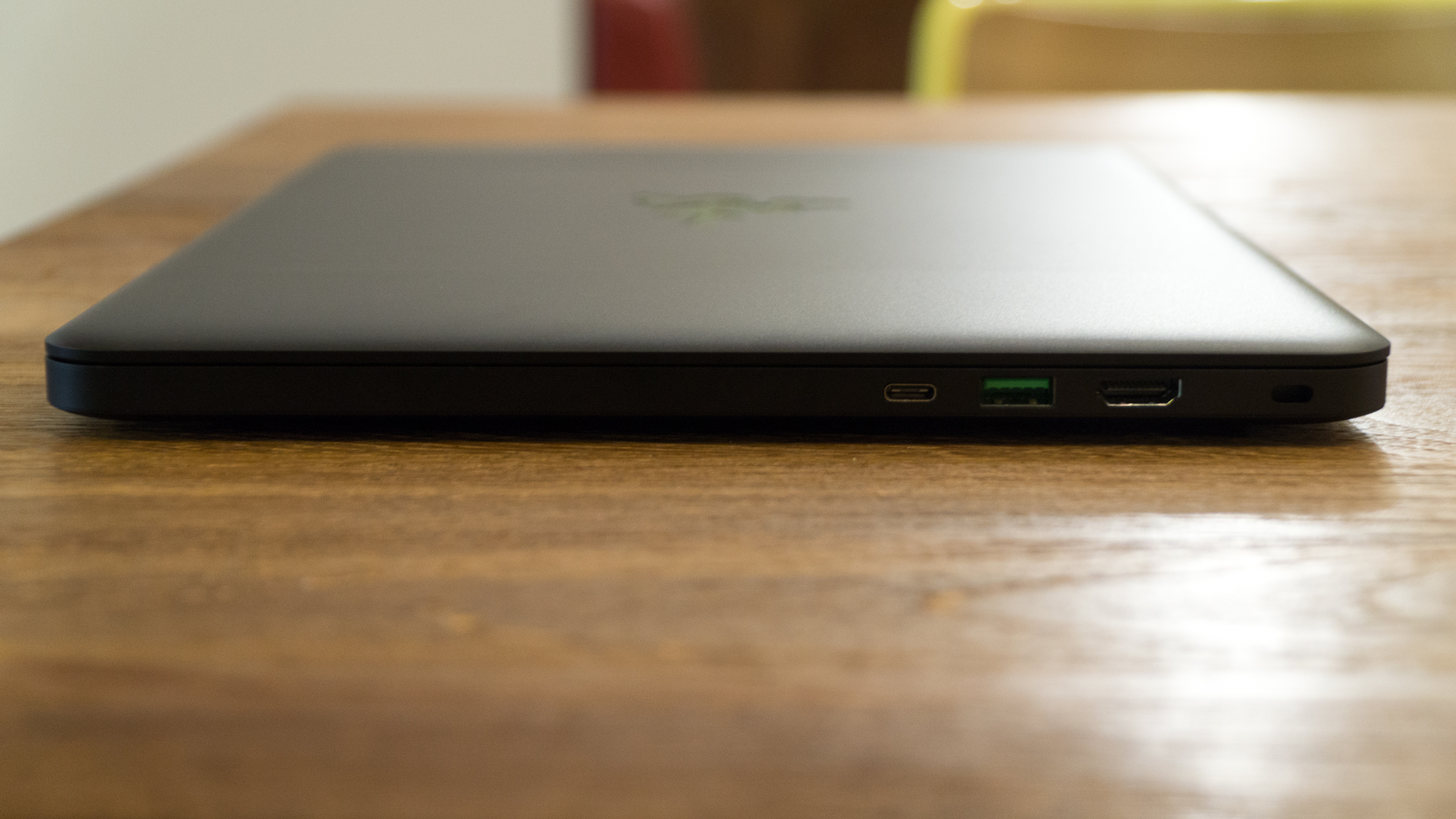
Battery life
The Razer Blade has grown to become one of the more respected gaming laptops in the battery life department. The previous model boasted impressive longevity for what’s inside, and this update doubles down on that.
This model’s PCMark 8 Battery Life result saw an increase by more than 30 minutes, lasting for a total of 4 hours and 8 minutes at 50% screen brightness simulating basic tasks. On our own battery test that loops 1080p video at 50% volume and screen brightness, the laptop ran for a whopping 7 hours and 29 minutes, more than two hours longer than the previous model.
To put that into perspective, this is 5 minutes longer than the new 13-inch MacBook Pro lasted on the same test (!!!), and far outclasses both the Dell and Gigabyte laptops. Considering Dell and Gigabyte’s products house larger batteries than Razer’s, we chalk this up to poor optimization. As for the MacBook Pro, well, it does feature a sharper screen by default.
Few, if any, gaming laptops can boast battery life this long, so this is not a detail to be overlooked.
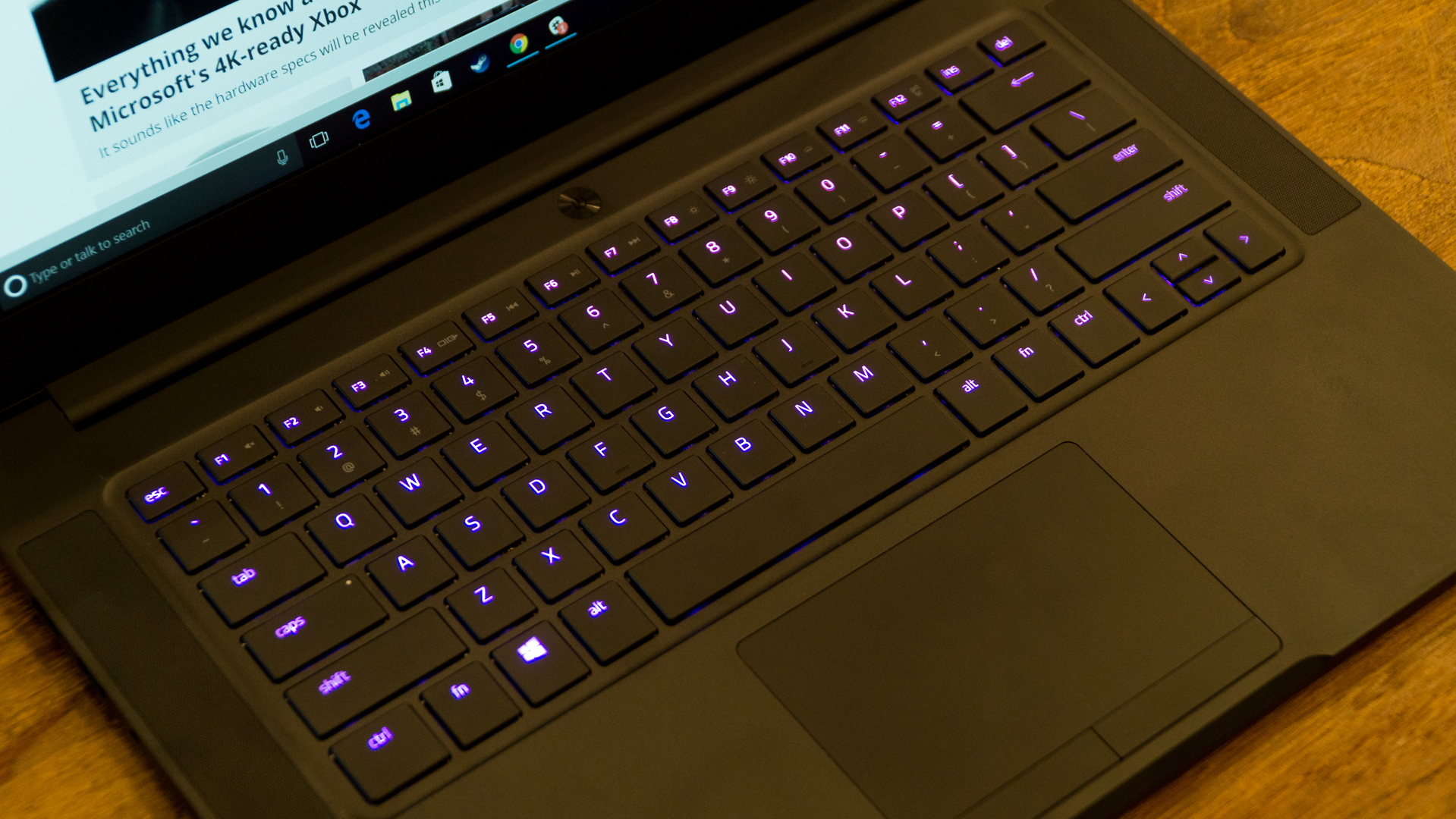
Chroma continues to woo
This is definitely not the first Razer Blade to contain the company’s popular Chroma keyboard, but it’s by no means any less impressive. Loaded with the same software that owners of Chroma desktop keyboards use, the keyboard sports all individually-lit keys that can display any of 16.8 million colors.
You can assign a unique color to each key on the board through this software, allowing you to highlight your most-used keys (i.e. WASD) or color code them for specific gameplay layouts (e.g. in different MOBA and strategy games). You can save these key color assignments across profiles, naturally. Chroma directly plays into some of the more mainstream PC games, like Overwatch, to activate lights in response to specific in-game events.
But, most importantly, this by far remains the most mechanically improved version of Razer's notebook keyboard to date. The key travel doesn’t feel much deeper than rivaling devices, but the feedback was far improved in 2016, and in all it remains one of the best-feeling laptop keyboards around.
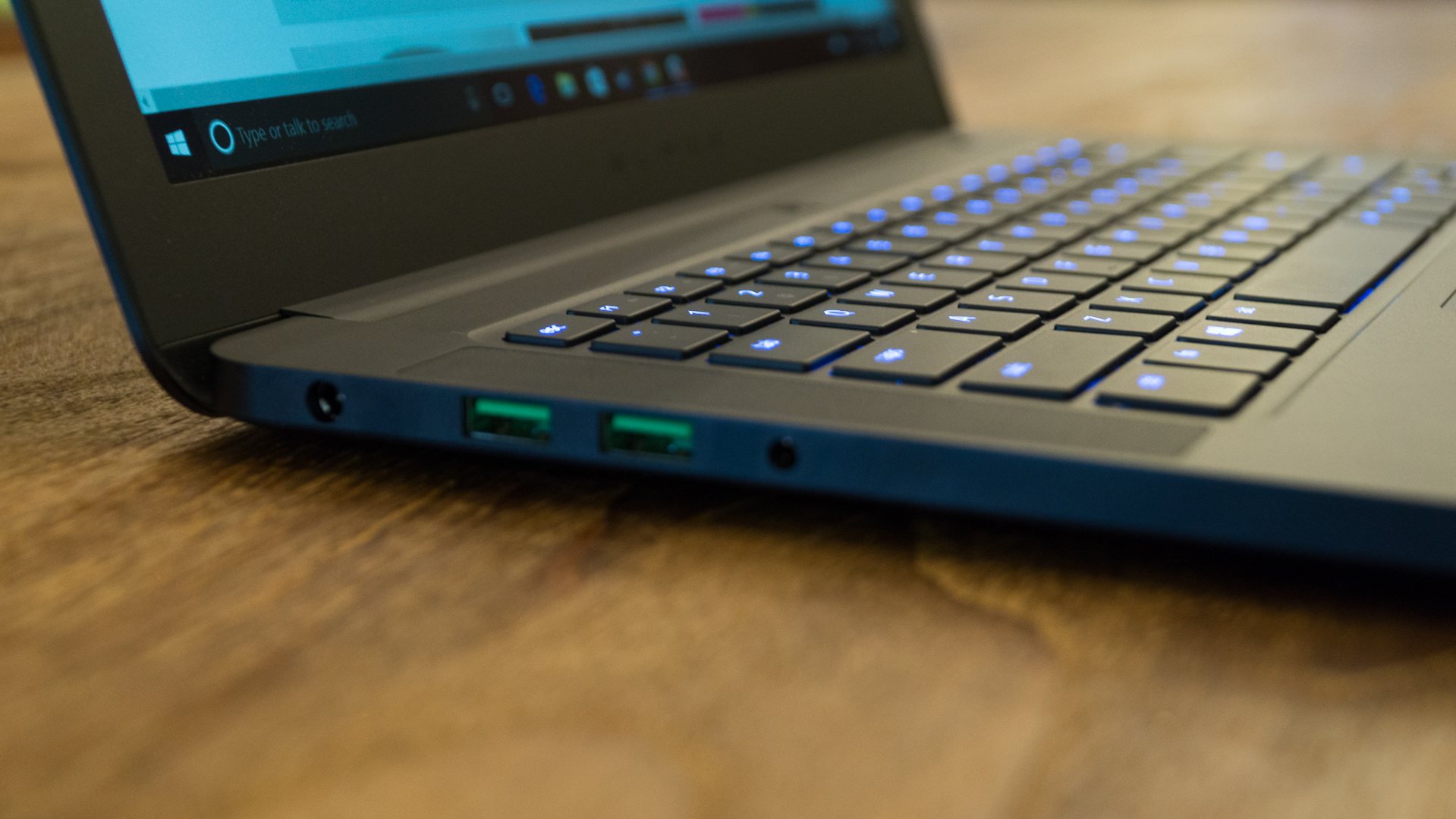
We liked
While there isn’t much about this Razer Blade that’s brand new for 2017, we appreciate the consistency in design and build quality while offering a performance boost in every category. Much longer battery life and slightly stronger game performance in an otherwise unchanged shell? When it looks like the Razer Blade, we’ll take it.
We disliked
That said, the Blade is getting to the point in its design refinement that these incremental updates are bound to get boring. We’d love to see Razer implement more interesting ideas into its Blade line without interrupting its primary functions, like the mechanical keyboard found inside the Blade Pro or – not that we’re at all asking for a direct corollary – the MacBook Pro’s Touch Bar.
Oh, and the Blade could stand to quiet down considerably while gaming. Just one more thing: please drop the trackpad buttons for a single button solution or a clickpad?

Final verdict
This year’s Razer Blade improves upon the performance put forth by the previous model in nearly every category. From general productivity to gaming and massive battery life gains in between, the new Blade does them all better than the 2016 model.
For that, Razer should be commended for continuing to perfect and refine its formula for the ultra-luxury gaming laptop. However, we’re also left wondering what’s next, as this update hasn’t drastically improved much about the device in the way that the 2016 update introduced tangible new features, like Thunderbolt 3.
At any rate, the new Razer Blade is a marked improvement upon the previous, and is arguably the best luxury gaming laptop there is. As such, it easily gets outpriced by cheaper rivals for similar performance, but you’ll be hard pressed to find a better looking and feeling – or thinner – gaming laptop than this.
0 comments:
Post a Comment